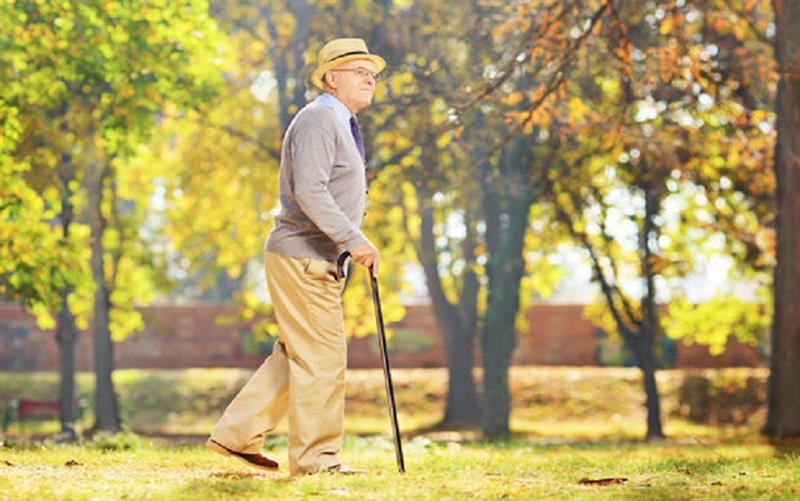
Walking canes are far more than just assistive devices; they are powerful tools for promoting health, wellness, and independence. Whether used for stability, rehabilitation, or simply to enhance mobility, the benefits of walking canes extend to both the body and mind. By embracing the hidden potential of this seemingly simple tool, individuals can unlock a path to greater vitality, confidence, and overall well-being.
In the realm of health and wellness, some solutions are so simple yet profound that they often go unnoticed. One such unsung hero in the journey towards better health is the humble walking cane. Often associated with support for the elderly or those with mobility issues, walking canes possess a plethora of hidden benefits that extend far beyond mere physical assistance. Let's embark on a journey to explore the myriad ways in which walking canes contribute to enhanced well-being and vitality.
1. Stability and Mobility:
The primary function of a walking cane is to provide stability and support while walking. By redistributing weight and providing an additional point of contact with the ground, canes help to alleviate pressure on joints, particularly the knees and hips. This enhanced stability not only reduces the risk of falls and injuries but also promotes confidence in movement, enabling individuals to navigate their surroundings with greater ease.
2. Improved Posture:
Using a walking cane properly encourages proper posture alignment. When held correctly, a cane can help align the spine, shoulders, and hips, reducing strain on the back and promoting better overall posture. Over time, this can lead to decreased discomfort and tension in the neck and shoulders, as well as improved breathing and circulation.
3. Enhanced Rehabilitation:
Following surgery or injury, walking canes play a crucial role in the rehabilitation process. They provide much-needed support during the initial stages of recovery, allowing individuals to gradually regain strength and mobility. Additionally, canes can be adjusted to accommodate varying levels of assistance, making them suitable for individuals at different stages of rehabilitation.
4. Increased Independence:
One of the most significant benefits of walking canes is the sense of independence they afford to users. By providing support without the need for constant assistance from others, canes empower individuals to maintain their autonomy and continue engaging in daily activities. This independence not only fosters a sense of self-confidence but also enhances overall quality of life.
5. Caloric Expenditure and Exercise:
Contrary to popular belief, using a walking cane can actually increase caloric expenditure during walking. The act of stabilizing oneself with a cane engages additional muscles, particularly in the upper body and core, resulting in a more comprehensive workout. Moreover, incorporating a walking cane into a regular walking routine can help individuals maintain an active lifestyle, thereby reducing the risk of chronic conditions such as obesity and cardiovascular disease.
6. Mental Well-being:
Beyond its physical benefits, the act of walking with a cane can have profound effects on mental well-being. Engaging in regular physical activity releases endorphins, neurotransmitters responsible for feelings of happiness and well-being. By promoting physical activity and independence, walking canes contribute to a positive outlook on life and may help alleviate symptoms of anxiety and depression.
7. Pain Relief:
Pain relief is another significant benefit that walking canes offer. For individuals with conditions such as arthritis, joint pain, or lower back pain, walking canes provide invaluable support by reducing the pressure and strain on affected areas. Walking canes help distribute weight away from painful joints, such as the knees and hips, by providing an additional point of contact with the ground. This alleviates the stress on these joints during movement, resulting in reduced pain and discomfort. By minimizing joint strain, walking canes enable individuals to engage in daily activities with greater ease and less pain.
8. Improved Mobility:
Improved mobility is a key benefit of using walking canes, particularly for individuals with mobility limitations or those recovering from injuries. Walking canes provide an additional point of contact with the ground, offering stability and support during movement. This increased stability is particularly beneficial for individuals with balance issues or those at risk of falls. By providing a steady base of support, walking canes help users navigate uneven terrain or obstacles with greater confidence, thereby enhancing mobility and reducing the risk of accidents.
9. Safety:
Safety is paramount when it comes to mobility, and walking canes play a crucial role in ensuring the safety of individuals, especially those with mobility challenges. One of the primary functions of walking canes is to provide stability and support, thus reducing the risk of falls. By offering an additional point of contact with the ground, canes help individuals maintain their balance and navigate uneven terrain or obstacles more safely. This is particularly important for older adults or individuals with balance issues, as falls can result in serious injuries.
10. Support during Fatigue:
Walking canes offer invaluable support when individuals experience fatigue during prolonged periods of walking or standing. For those with conditions like arthritis or muscle weakness, fatigue can set in quickly, making it challenging to continue walking comfortably. Walking canes provide a means to redistribute weight and relieve strain on the legs, allowing individuals to rest intermittently while still maintaining mobility. This support can significantly extend the distance individuals can walk without experiencing excessive fatigue, enabling them to engage in activities for longer durations while minimizing discomfort.